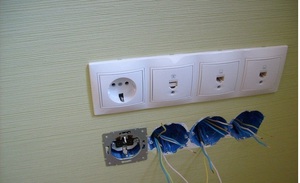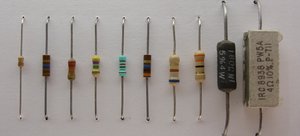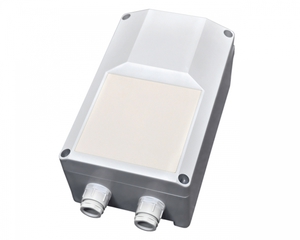Replacing the electrolyte in the battery at home
Today, car batteries are the two most common types: are not serviced and are serviced by batteries. In the first case, only the ability to recharge the battery with a charger is implemented.
The second type of battery allows you to not only charge the battery, but also to check the density of the electrolyte in the "banks" (sections), analyze its condition. If necessary, the electrolyte level can also be increased or completely replace the fluid.
As for maintenance-free batteries, access to the electrolyte is also possible, however, involves self-modification of the battery housing device. To be precise, you need to drill additional holes and then seal them.
Next we'll talk about that, for which the electrolyte in the accumulator is required, whether it is possible to top up the electrolyte in the battery and how to do it right. Frequently asked questions will also be considered, which is better, distilled water or electrolyte into the battery, how the level is measured, how to completely replace the electrolyte in the battery and then charge the battery.
When to top up the electrolyte in the battery and how it is done
Let's start with that, that the general principle of the battery is the possibility of accumulation of electric charge due to ongoing chemical reactions between the electrolyte and lead plates inside the battery. These reactions occur under the influence of electric current.
Current is supplied to the battery during engine operation. To be precise, the supply of electricity comes from the car generator. You can also charge the battery separately using an external charger (ZU). During operation, the most common battery failure is loss of electrolyte density. The main reasons include aging, sulfation of the plates, overcharge or undercharge of the battery.
Sulfation of plates, usually, is the result of insufficient charge. The point is, that inside the battery are special grilles, in which there is lead dioxide. When the battery is discharged, lead oxide is reduced at the cathode, this also activates the oxidative process at the anode. If simple, anode and cathode can be considered more common "plus" and "minus".
These processes lead to that, there is an increased formation of lead sulfate. The result of such education is a decrease in the density of sulfuric acid in the electrolyte. In this case, it is necessary to measure the density with a special device (hydrometer), then you need to raise this figure to the desired value.
The wrong approach is to top up the electrolyte immediately after the measurements, that is, directly on the car. To avoid mistakes, you need to know, how to add electrolyte to battery. The point is, that the density should be measured on the battery, which was previously fully charged.
Also in the "banks" should be a normal level of electrolyte. Ignoring these rules leads to that, that the process of sulfation does not stop, the battery fails. If the density of the charged battery is within the recommended range of 1.27 to 1.29, then the electrolyte is simply topped up and the battery is operated further.
When the density is less than recommended, then you should start by implementing several cycles, which provide a full charge-discharge battery. Only then can you add fresh electrolyte, achieving the desired density. In those cases, when the electrolyte density is above normal, then distilled water is added to the battery. The use of ordinary water is not recommended, as possible precipitation and other undesirable consequences.
Let's add, what else is important to consider, how much electrolyte is needed in the battery. This information will be useful in situations with topping up, as in case of full replacement of electrolyte it is desirable to specify in advance necessary quantity at sellers of joint stock bank, on profile auto forums or from other sources.
As for the serviced battery, answer the question, how to check the electrolyte level in the battery, there is a need to open the traffic jam on the "banks". After unscrewing them, you can see the labels, indicating the level. If there are no such marks, distilled water or electrolyte is added as follows, to cover the surface of the plates on 5 or 7 mm.
It should be considered separately, that the level should not be too high. We need to achieve that, to stay 2 cm. To cut the plug. With a maintenance-free battery there are additional difficulties with access to "banks", and with the definition of the level, the amount of electrolyte, etc.. For this reason, it is not recommended to perform such manipulations without appropriate experience.
How to change the electrolyte in the car battery and when it is needed
so, now let's look at the situation, when you need a complete replacement of the electrolyte in the battery. Most often understand, whether to change the electrolyte in the battery, helps his visual assessment and some other characteristics.
Usually, indicates the need for replacement:
- turbid electrolyte in the battery, color change;
- it is not possible to achieve the desired density after charging the battery;
Also, experts recommend a complete change of electrolyte in those cases, when a relatively new battery began to discharge rapidly after a full charge with the memory, during the inspection was found, that there is no electrolyte in the battery in one jar, previously there was a freezing of the electrolyte, etc..
In practice, turbidity indicates that, that the battery is initially filled with low quality electrolyte, it is also possible to use a low-grade product topping up. Also to turbidity leads to flooding, rather than distilled water. Still possible, topped up water contains impurities.
The next reason, that the electrolyte is cloudy, becomes damaged, as well as shedding of plates. In parallel it is not necessary to exclude probability of a short circuit in one section or at once in several. Usually, the appearance of a cloudy gray precipitate indicates shedding of the plates, black or dark color of the electrolyte is a sign of poor quality of the main components of the electrolyte (water and / or acids). The brown color indicates that, that the battery is short-circuited.
It is necessary to consider, that in case of shedding or short circuit the decision to change the electrolyte in some cases may not lead to a positive result. The point is, that to restore efficiency it is also necessary to repair the battery sections separately, such an operation requires special equipment.
In other cases, replacement of the electrolyte in the battery at home is quite possible. Moreover, Properly performed procedure can significantly extend the life of the battery. To implement the task you need to prepare in advance:
- fresh electrolyte with the desired density;
- distilled water;
- hydrometer for density measurements;
- rubber bulb or syringe for pumping old electrolyte from cans;
- funnel for the convenience of a bay of clean water and electrolyte;
- capacity for draining the old electrolyte, pump out surpluses, etc..
Ordinary glass jars or bottles will work well as a container, as they are not affected by sulfuric acid. It is also desirable to have goggles and rubber gloves, as work with acid solutions requires compliance with certain safety rules.
The point is, that the electrolyte after contact with exposed skin can cause chemical burns. This solution is also a significant danger to the eyes. In case of contact with skin, the electrolyte should be washed off immediately with a soda solution. In case of contact with eyes, rinse immediately with plenty of water, then seek professional medical attention immediately.
We also recommend reading the article about it, What shall I do, if the electrolyte in the battery is frozen. In this article you will learn about the reasons, which lead to freezing, as well as ways to restore battery life.
so, let's move on to replacement. Let's note at once, at the initial stage you need to know, how to properly drain the electrolyte from the battery. Quite obviously, that many seek to remove fluid from the battery faster, without thinking about it, whether it is possible to turn over the accumulator at electrolyte replacement.
It would seem, just unscrew the plugs on the banks, turn the battery over and drain the old electrolyte from the housing. pay attention, in half of the cases, this approach leads to the final failure of the battery. The point is, that sediment particles, which settled at the bottom, after turning over, get stuck between the plates. As a result, the battery will continue to short circuit. If you have not previously serviced the battery, then we recommend reading it, how to properly charge the battery with electrolyte.
- First you need to remove the battery and wipe the case, removing various contaminants. For these purposes, a rag is best, which is pre-soaked in a solution of water and soda. To make the solution itself, should be a couple of tablespoons of baking soda diluted in a liter of water.
- Then you need to wrap the filler plugs on the battery, then the electrolyte level is checked, his condition, color. You also need to assess the battery charge with a multimeter.
- If the fluid clearly needs to be replaced, then the old electrolyte is pumped out of the jars by a pear, syringe or any other similar solution.
- Then you need to pour distilled water into the empty jars, then shake the battery slightly. This is required for rinsing. The battery is washed several times, at each stage draining water from cans. It is necessary to do so until then, until the water becomes completely clear.
- Then you can pour fresh electrolyte into jars, and you do not need to immediately try to bring its density to normal.
- Now you need to charge the battery from the memory. Only after the complete end of the charging process is the density checked by a hydrometer.
- Additionally, it is recommended to wait before measuring, so that the battery has time to cool down. Of course it is necessary 1.5-2 years. Then (on the basis of the data received at measurements) adjustment is made by selecting the desired ratio of water or electrolyte.
In practice, the replacement procedure involves pumping electrolyte from each can, then it is drained into a container prepared for this purpose. This must be taken into account, that remove the liquid completely in this way will not work.
- For the most effective removal, slowly tilt the battery case, choosing a liquid. But remember, that overturning the case is strictly prohibited, as mentioned above. In order not to hold the battery, it is possible to put under the case bars or other subjects for an emphasis.
- You can also install a flexible tube on the nose of the pear (example, from the dropper). The main thing, to the diameter of the tube, allowed it to be tightly put on and fixed.
- After draining the liquid from the cans, the inclined battery is set to the normal position, then distilled water is poured into each jar through a funnel.
- Do not shake the battery during flushing, sharply tilt the body, etc.. A few smooth slopes in different directions will suffice. After that, the water drains, the washing procedure is repeated.
- Now you can fill the electrolyte, however, it should not be immediately brought to the desired level. The point is, that electrolytes on sale have a high density. This means, that the solution must be diluted with distilled water. At the very beginning, it will be enough to follow the approximate figures, as the density is normal after the battery charge.
We will also add, that after, as the electrolyte was flooded, you need to gently tilt the battery several times (as in washing). This will remove air from the battery cans. The plugs can now be closed, but do not twist completely. The battery itself must be left for a couple of hours. This is required to settle the liquid in the jars.
Then you need to check again the electrolyte level and its density, adding acid or water if necessary. Also, if necessary, you can add a special additive to the electrolyte, which helps remove sulfates from the electrodes. Then you have to wait, until, under the action of the electrolyte, all residual air is finally removed from the housing, and the additive will dissolve. Note, that the additive dissolves about 2 days. After that, the battery can be charged.
After replacing the electrolyte, how much to charge the battery
At the very beginning, it is recommended to charge the battery with low currents after replacing the electrolyte (0.1 A). To charge, you need to unscrew the plugs and connect the memory. The main thing, so that the battery is cyclically charged after electrolyte replacement, ie the "charge-discharge" scheme is provided.
This process must be repeated until then, until the density of the electrolyte reaches the desired value. At the same time you need to monitor that, so that the electrolyte in the battery does not boil. Voltage will indicate full charge 2.4 In relation to a separate section or 14-15 In the battery terminals.
After, how the rated voltage will be reached, the charge current should be halved. If during 2 hours the density of the electrolyte does not change, then you can stop the charging process.
We also recommend reading the article about it, how to charge a car battery with a charger. From this article you will learn about the parameters, which must be set on the memory for proper charging, how much to charge the battery, what currents, etc..
As for the discharge-charge and cyclicity, the battery needs to be discharged, in the middle, up to half capacity, then fully charged again. The consumer is connected to the terminals for the battery discharge (simple ones can be used for these purposes 12 In car lights). After connection, the battery voltage is monitored, to prevent deep discharge. When the discharge reaches the mark 10.5 V, the battery is charged again.
As a result
As you can see, in some cases it is possible to effectively restore the efficiency of the car battery by washing the cans and refilling the new electrolyte. However, you should not count on it, that replacing the electrolyte will allow the battery to work for a long time. In some cases, the battery works fine 6-12 and more months, while others may have problems in a few days.
Finally, let's add, that it is also not recommended to carry out any manipulations with maintenance-free batteries. It is better to replace such batteries with new ones in that case, if the element fails to return to service after one or more cycles "discharge-charge".
As for the disposal of old electrolyte, it is impossible to drain a solution in reservoirs, pour on the ground, in the sewer, etc.. The point is, that the acid must first be neutralized. To solve the problem, we recommend that you study this issue separately in specialized forums or get professional advice. This will determine exactly the most suitable option, which will be optimal in each case.



